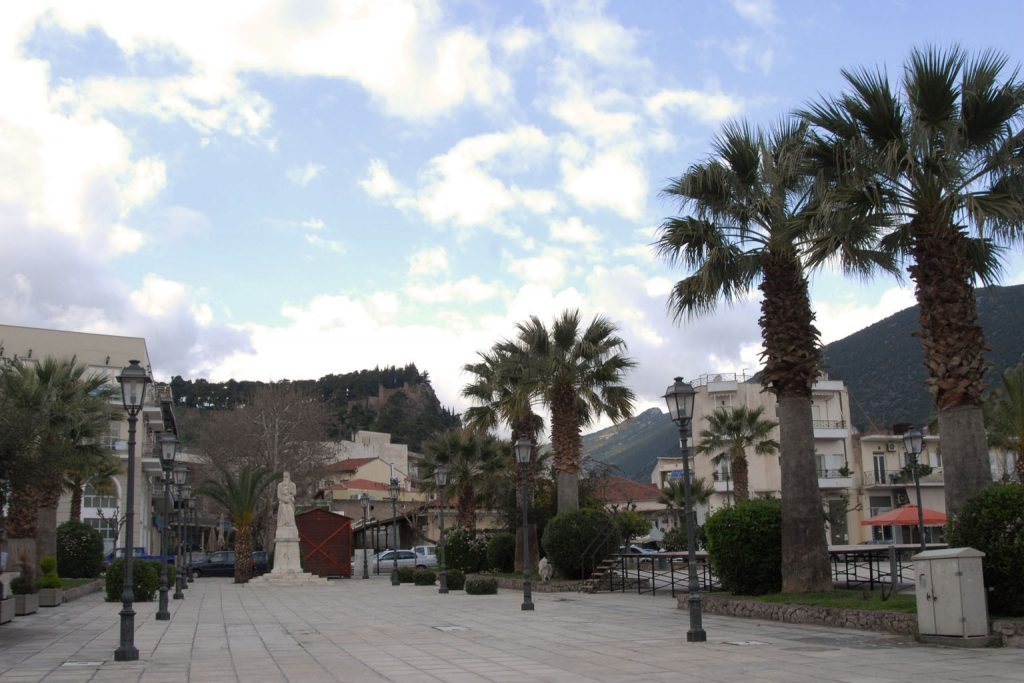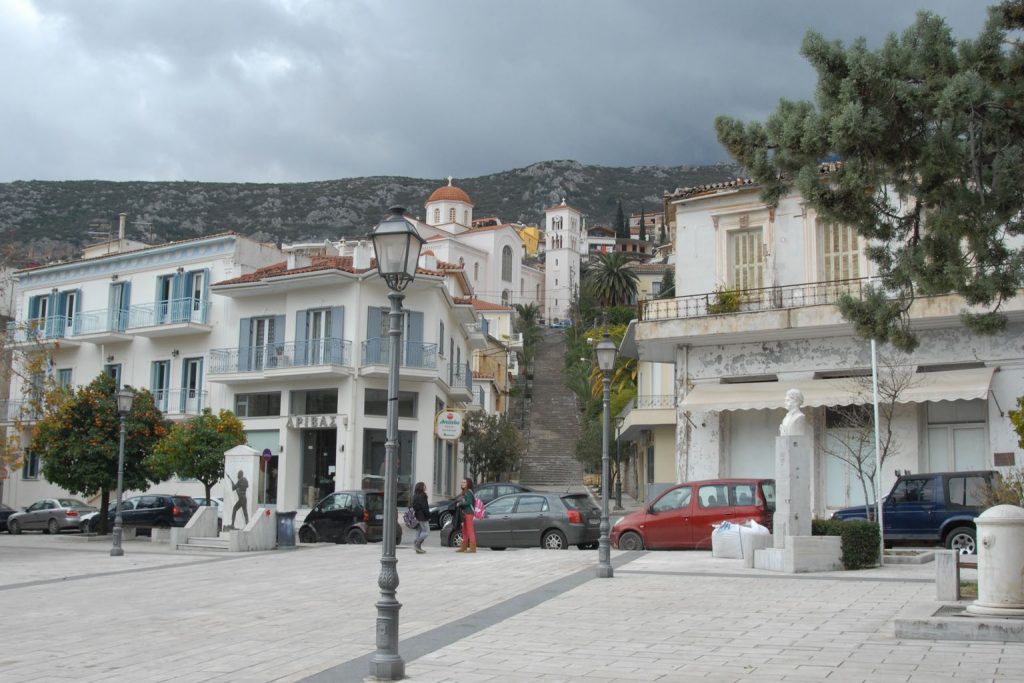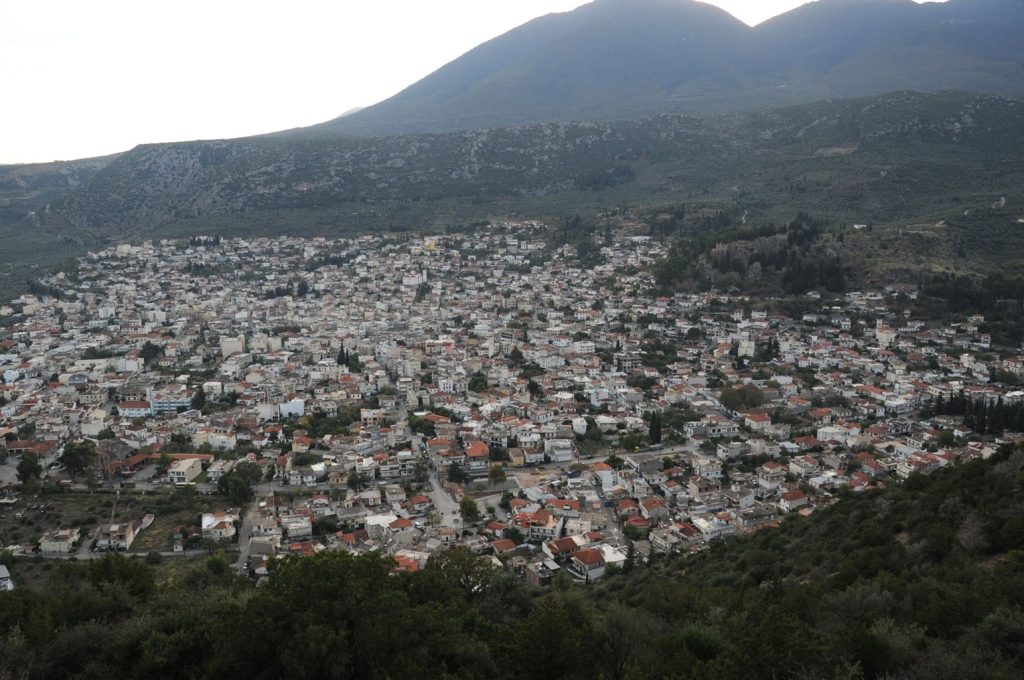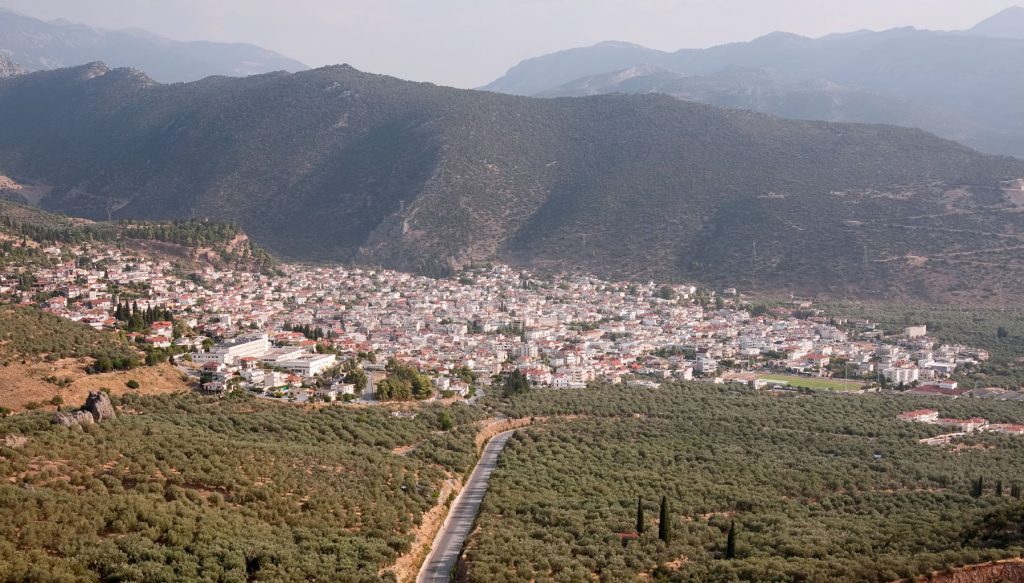Amfissa
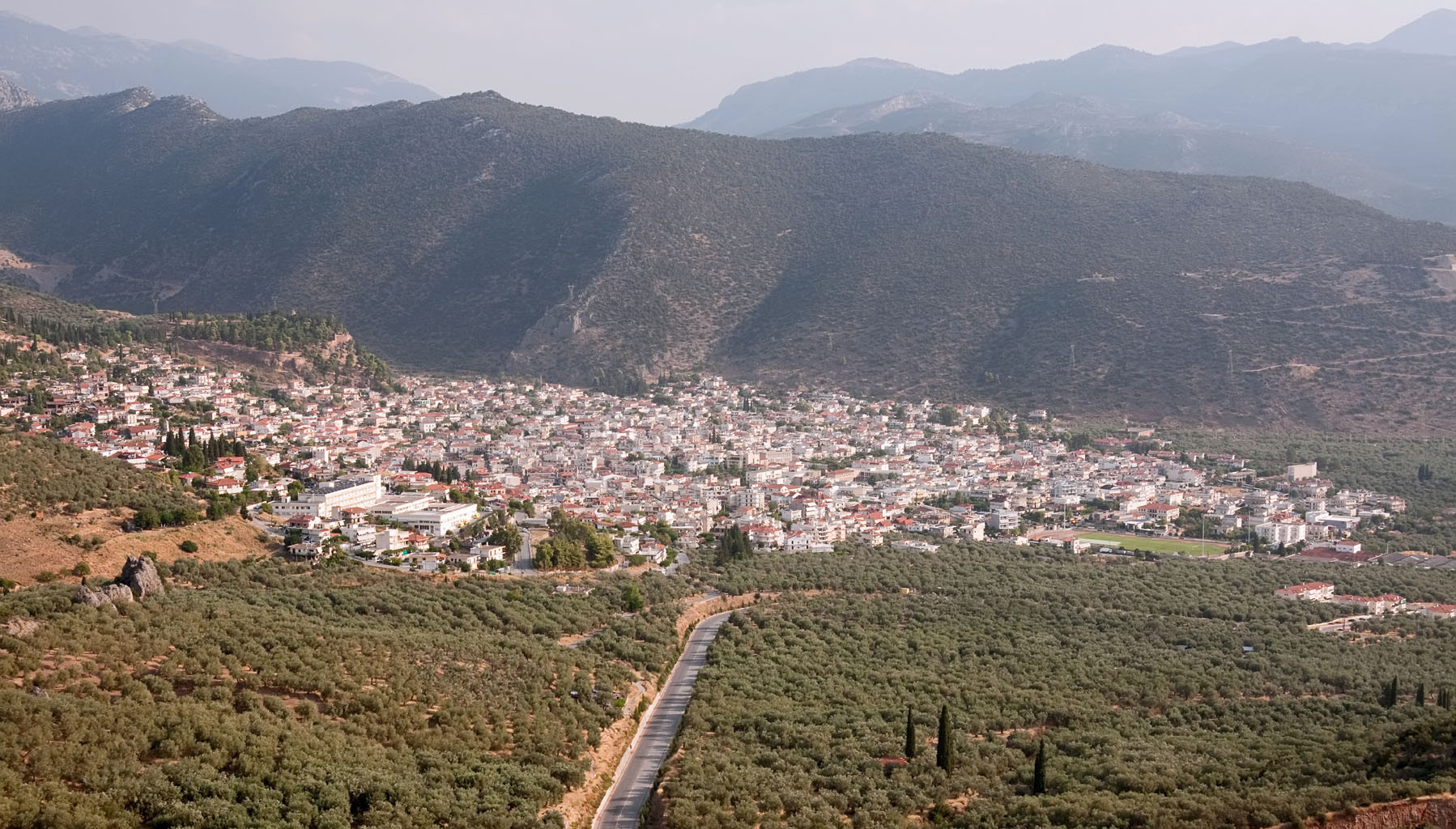
Amfissa inhabited since ancient times as it is evidenced by lots of cyclopean walls of the acropolis of which survive to this day.
The name Amfissa owes, according to the dominant two versions, or the homonym mistress of Apollo , daughter of Makaros and granddaughter of Aeolus , either by the verb get dressed(=surround dress with), because the city was built at the foot of Gkiona and in the east of Parnassus. For the second version Aristotle states: “Amfissa named by the mountains that there are around it”.
The period of antiquity and the middle Ages
On the edge of its maximum during the period of antiquity has been found in the 2nd century BC. Amfissa has been a great city – state and it was the capital of Esperies or Ozolon Lokron.
During the Byzantine millennium, for which the unique historical document for the history of Amfissa is the “Chronicle of Galaxidi” of the monk Efthymios, the city was isolated by the raid of Bulgarians in the late 10th century and then – at the dominant version – was settled by Dalmatians. At that time, it is acquired the name of Salona for which there are also two versions: either it is a corruption of the word Salonica (Thessaloniki) and was given to Amfissa by the Frank king of Thessalonica Boniface of Montferrat, who has captured it or – even the widely accepted version – comes from the word turmoil which means concussion, because of the many earthquakes that occurred in the region.
During the middle Ages, Amfissa was occupied by order of the Franks (who had founded the Barony of Salonwn), the Catalans and finally the Turks.
The role of Amfissa in the revolution of 1821
The most glorious period of the history of Amfissa was during the revolution of 1821. It was the first city of Roumeli which has rebel two days after 25 of March, when Panourgias, Manikas and Trakas with the lads have occupied the city and on 10 April have sacked the castle of Salona.
After the liberation, Salona became the capital of East Terrestrial Greece with the foundation of the Supreme Court of Salona that has been voted the Constitution of East Terrestrial Greece.
In 1833, Salona is renamed again in Amfissa with the city to progress and the residents to demolish the buildings of the Ottoman period, including six mosques.
In its modern history, Amfissa is tested during the years of the occupation by both the Italians and the Germans during the Second World War while there were significant losses at the bloody period of civil war too.
Amfissa useful information
Amfissa, the capital of the prefecture of Phocis, is built at the foot of Gkiona and in the east of Parnassus. From Amfissa to Itea is just a distance of 13 km, the archaeological site of Delphi at 20 km and at 30 km the historical Galaxidi. The city is located at the northern end of the famous Olive grove Amfissa which is referred to as the oldest in the world.
Amfissa was a major city-state in ancient times and it was the capital of Esperies or Ozolon Lokron.
It owes its name either to the homonymous lover of Apollo, daughter of Makaros and granddaughter of Aeolus, either by the verb get dressed (=surround dress with), because the city was built at the foot of Gkiona and in the east of Parnassus. For the second version Aristotle states: “Amfissa named by the mountains that there are around it”.
Do not forget if you go in Amfissa to visit:
• The Castle of Salona or Castle of Oria
• The old district of tanners, Charmaina below the Castle
• The gorge of Rekkas, which covers an area of 4,626 hectares and it’s accessible from Prosilio and Biniani
- The Metropolis of Amfissa
- Archaeological and Folklore museum

